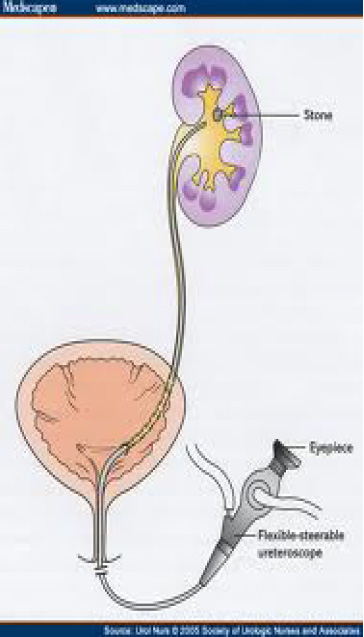(02) 4732 4024
(02) 4732 4024

Patient information: Flexible Ureteropyeloscopy and laser treatment of stones in the urinary tract.
- This procedure is used in the treatment of stones in the kidney and ureter. Your Urologist will decide if you are suitable for this treatment.
- It is minimally invasive. It is carried out by passing a bendable telescope through the urethra or “ Water passage” and into the ureter and kidney. Laser energy is then used to break the stone into minute fragments which can be passed easily.
- It is carried out under a General anaesthetic but most patients are able to go home the same day.
- You will be required to fast for 6 hours prior to the procedure.
- Sometimes it may be difficult to pass the scope up the ureter due to its narrow size. It is then safer to leave a narrow tube called a stent in the ureter internally for 2-4 weeks and then bring you back for the procedure at a later time.
- The Urologist will often leave a stent in the ureter with strings attached, for a week, after the procedure and remove it in the office. This is easily done with minimal discomfort.
- It is important your urine is free of infection prior to the procedure. Sometimes your Urologist may prescribe antibiotics prior to the procedure to reduce the risk of an infection.
- This procedure is very safe and most patients will have an uneventful recovery. It is not unusual to pass blood stained urine and have some pain in the side of the abdomen and frequency and urgency passing urine.
- There are however some complications that can occur very rarely. They are urinary infections spreading to the blood stream and causing Sepsis, injury to the ureter from passing the instruments, pain bad enough for you to require strong pain killers and residual stone fragments which may require another laser procedure at a later time.
- If you have any concerns you may contact your Urologist’s office or go to the Emergency department of the nearest hospital.